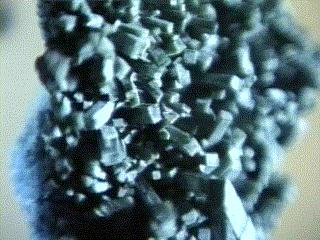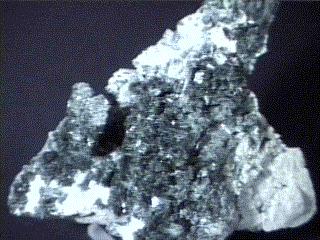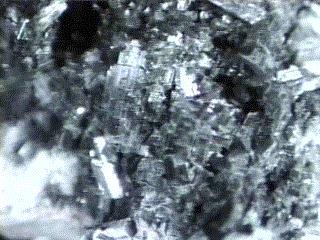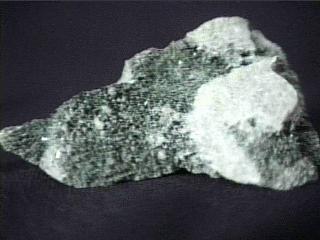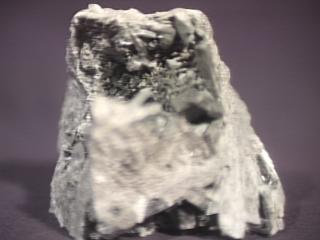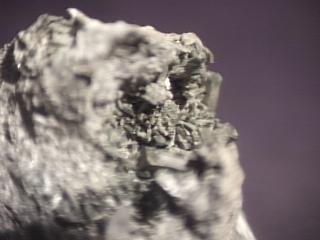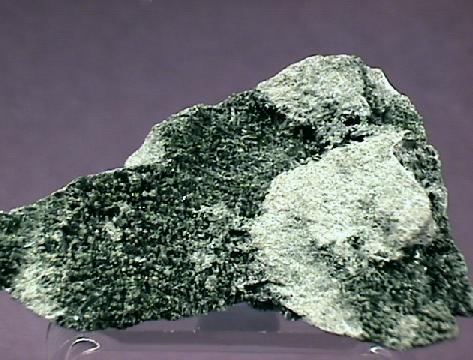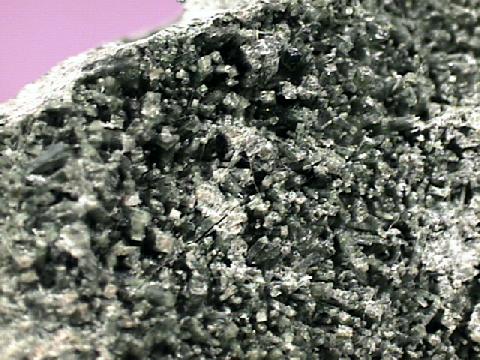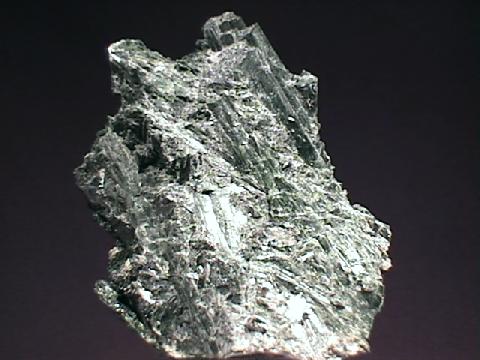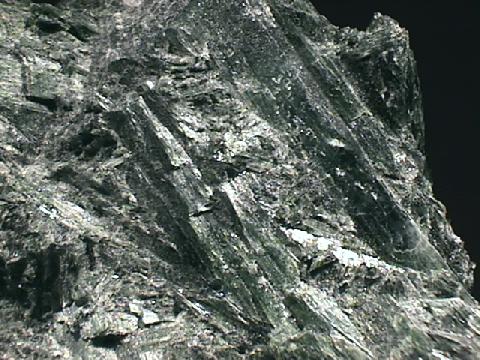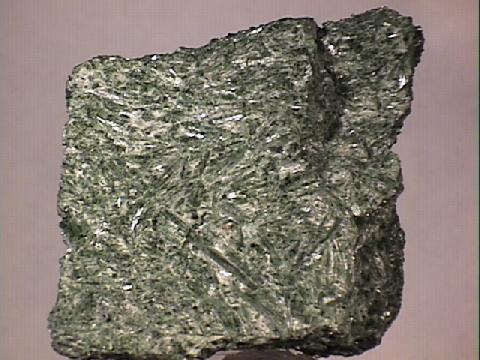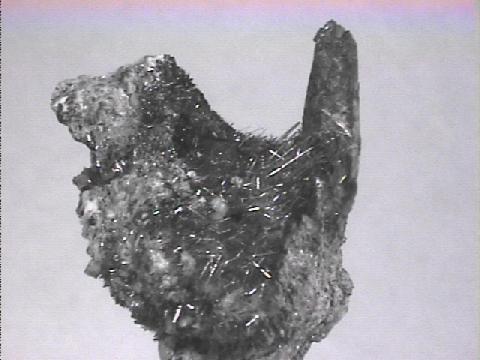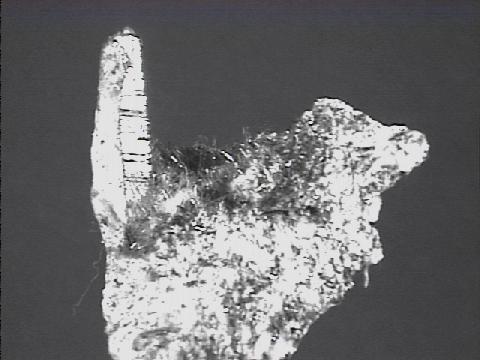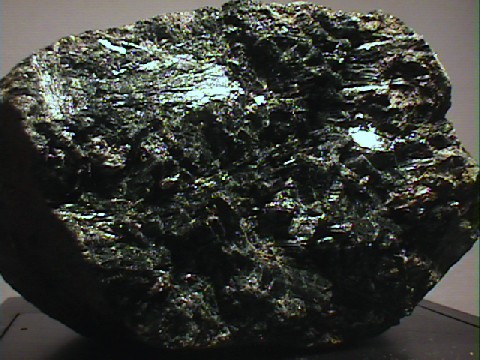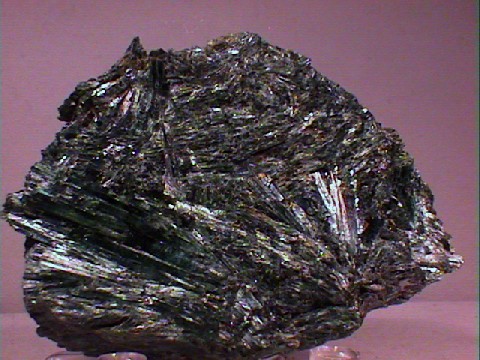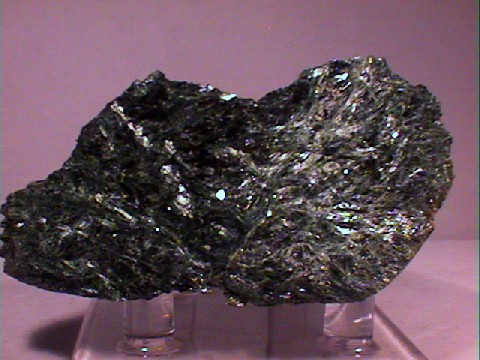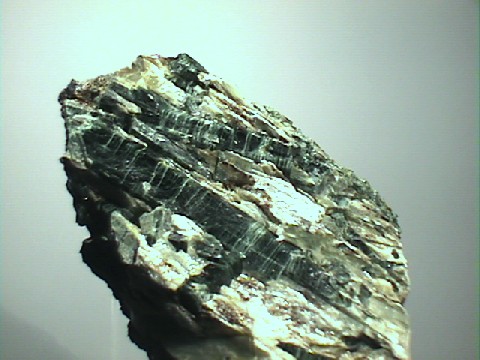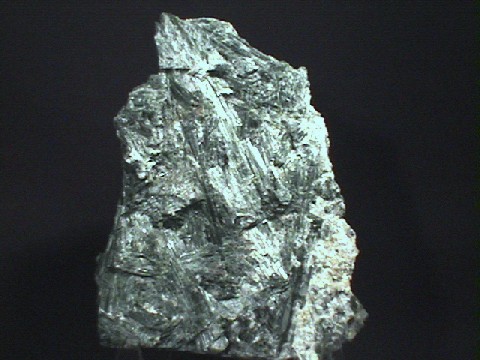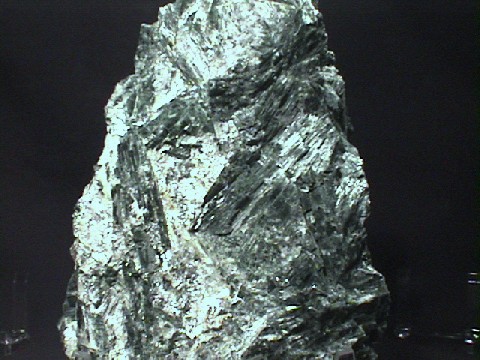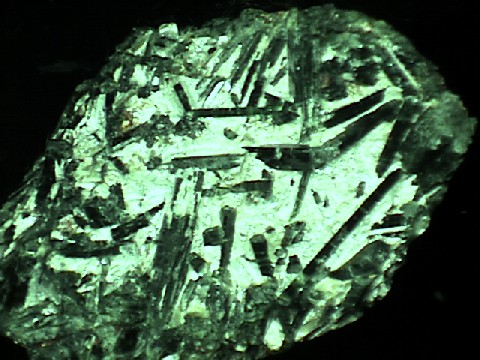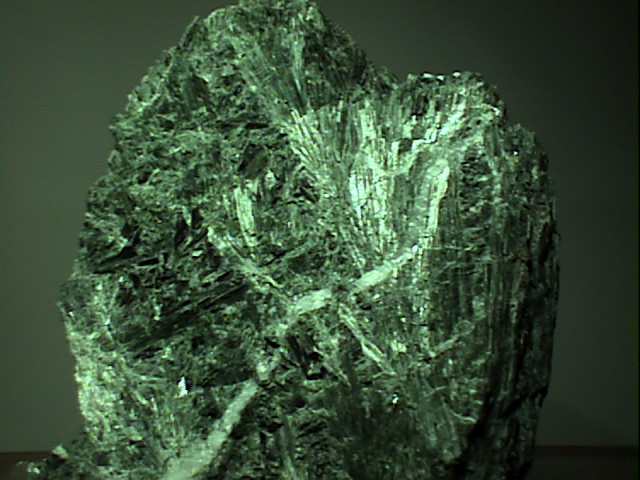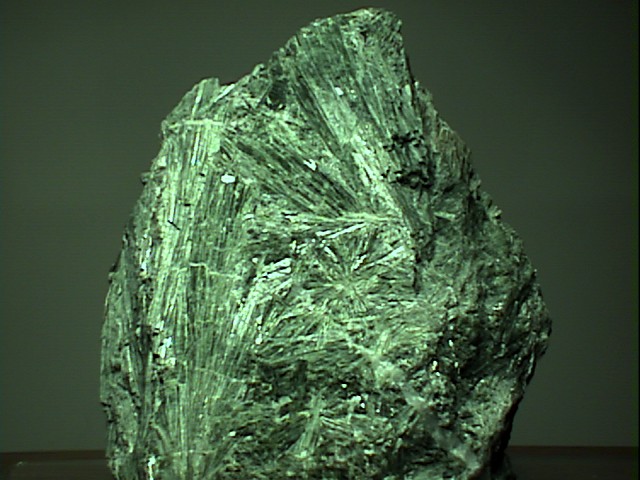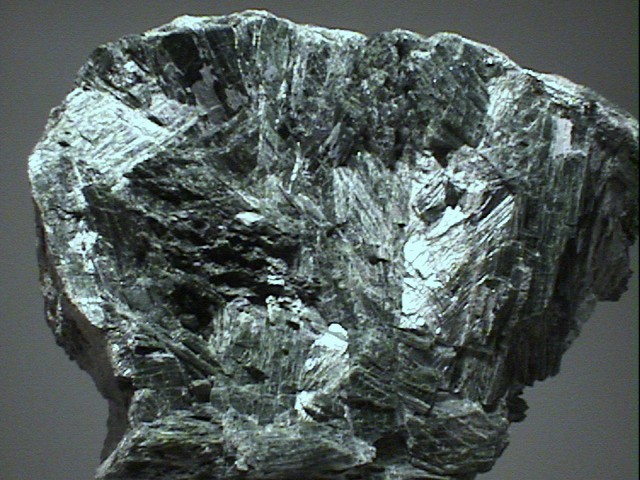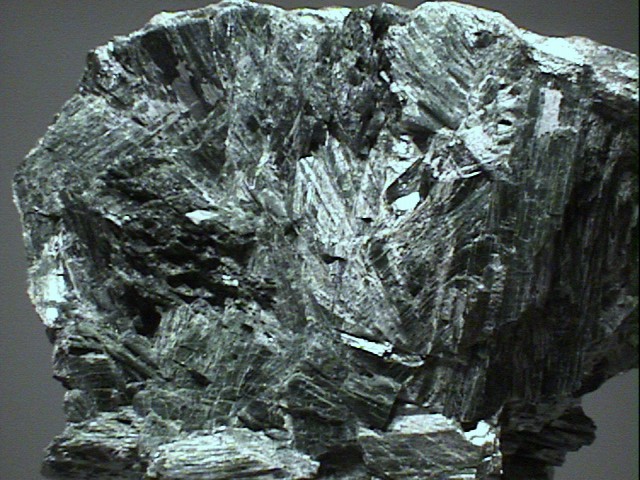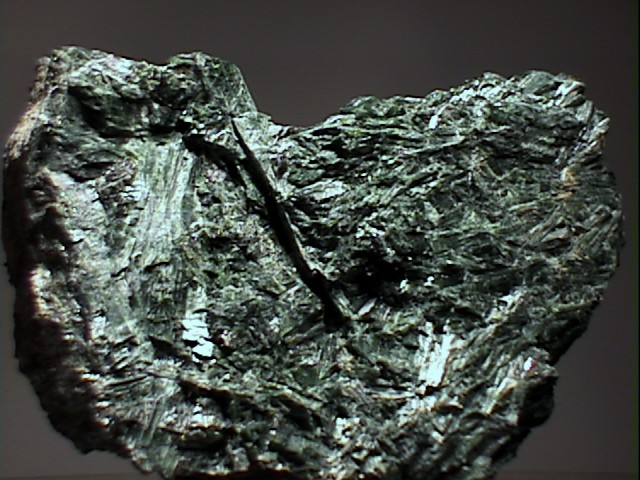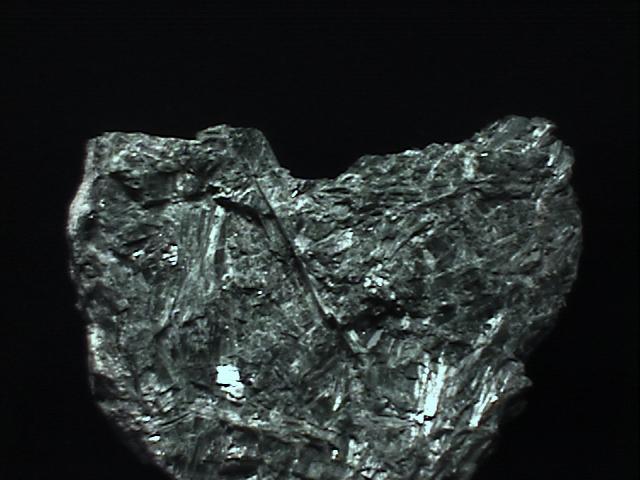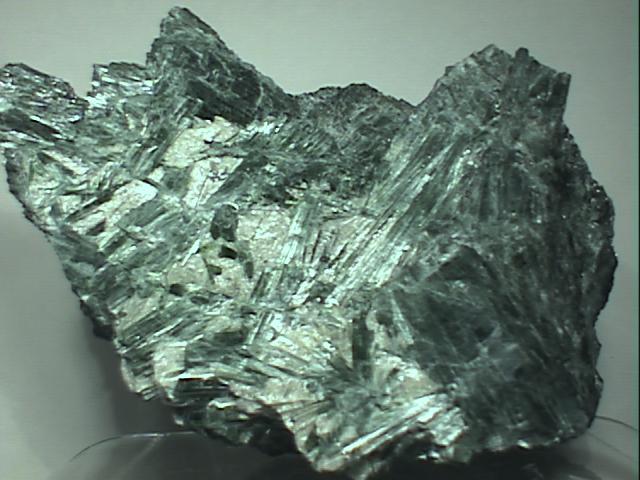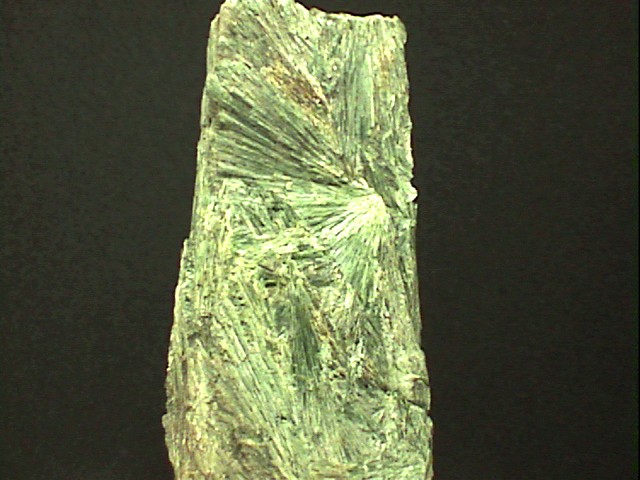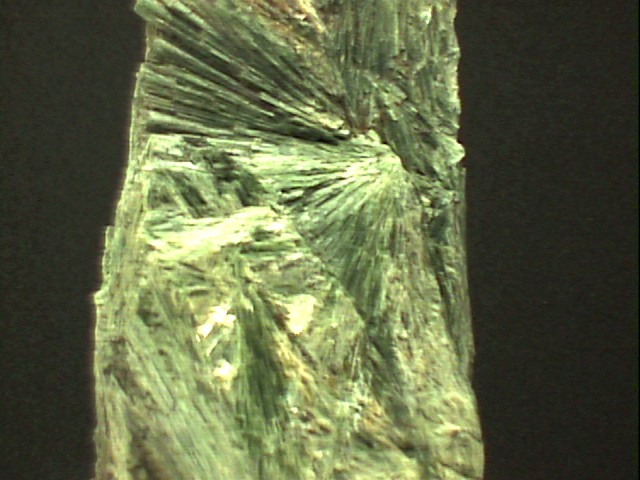 The Mineral ACTINOLITE
The Mineral ACTINOLITE
- Physical Properties: Click here
- Chemistry: Ca2(Mg, Fe)5Si8O22(OH)2 , Calcium Magnesium Iron Silicate Hydroxide.
- Class: Silicates
- Subclass: Inosilicates
- Group: Amphibole
- Uses: asbestos and as ornamental stone used for carvings and semi-precious to precious stone used in jewelry
Specimens
A variety of actinolite is composed of microscopically fibrous crystals (asbestos) and is called byssolite. Other minerals also form asbestos such as serpentine and the minerals of the series mentioned above. Serpentine asbestos is more widely used and of a better grade in general. Although asbestos has been shown to cause cancer in humans when inhaled in high enough concentrations, it still has many valuable applications. Asbestos is used for fire retardant materials and brake shoes and pads. Its prior use as insulation has been all but eliminated due to health concerns.
A variety of actinolite, nephrite, is one of the two minerals called jade. The other jade mineral is jadeite. Jade has been used for eons in China and Central America as an ornamental and religious stone of deep significance. The nephrite jade was used mostly in China, although both have been used in both regions. Nephrite is more abundant than jadeite and has few color varieties, ranging only from creamy white to green.
Simple actinolite occasionally forms interesting crystal habits and specimens. Crystals can be similar to hornblende, but are always translucent or even transparent. Typically they are prismatic, flattened and elongated. Crystal specimens of actinolite can make very interesting mineral specimens.
PHYSICAL CHARACTERISTICS:
- Color is usually green.white or gray.
- Luster is vitreous.
- Transparency: examples are translucent to transparent.
- Crystal System is monoclinic; 2/m
- Crystal Habits include the flattened prismatic and elongated crystal with a dome-like termination that is actually a two of the four faces of a prism. Also as a fibrous mass (asbestos) and as a fibrous and very compact mass (nephrite jade).
- Cleavage: is perfect in two directions at close to 60- and 120-degree angles.
- Fracture is splintery to uneven.
- Hardness is 5.5 - 6.
- Specific Gravity is approximately 2.9 - 3.3 (very slightly above average for translucent minerals).
- Streak is white.
- Associated Minerals are quartz,
lawsaonite , epidote and glaucophane. - Other Characteristics: the compact nephrite variety is extremely tough and is actually stronger than steel.
- Notable Occurrences include the Lake Baikal Region, Russia; China; New Zealand; British Columbia, Canada and Taiwan.
- Best Field Indicators are toughness (nephrite jade), fibrosity (asbestos), typical green color, crystal habit and hardness.


